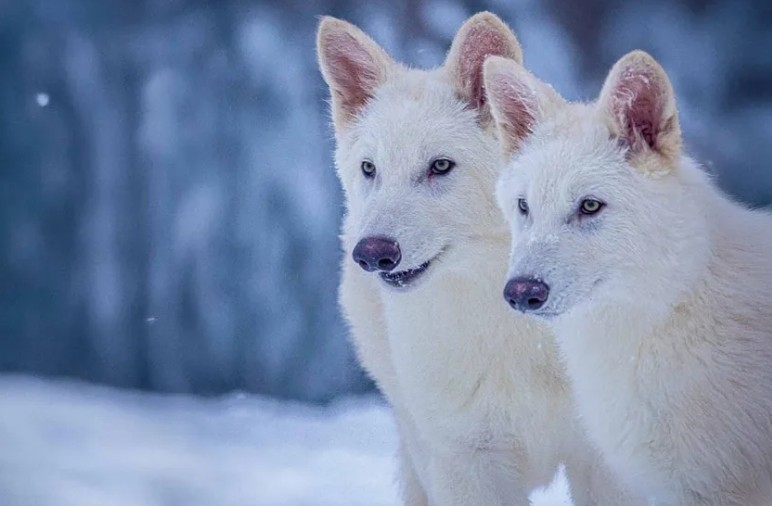
Newsroom
For centuries, the dire wolf was relegated to the pages of fantasy novels and the ancient bones of North America. These fierce, massive predators roamed the continent, hunting mammoths and giant sloths until their mysterious extinction 12,500 years ago, at the close of the last ice age. But just six months ago, something remarkable happened. Scientists brought them back.
Thanks to the groundbreaking work of Colossal Biosciences, the same company behind efforts to revive extinct species like the woolly mammoth, three dire wolves were brought into existence. Yes, you read that right—these legendary beasts are now roaming the Earth again. Their names? Romulus, Remus, and Khaleesi.
 Romulus and Remus seen standing in the snow.
Romulus and Remus seen standing in the snow.
A Bold Experiment in De-Extinction
The resurrection of the dire wolf is no small feat. Rather than simply cloning an ancient wolf from a piece of fossilized DNA, Colossal’s scientists used ancient genetic material to craft a modern version of the creature. Two key pieces of DNA were sourced from fossils—one from a 12,000-year-old tooth and another from a 73,000-year-old ear bone. This ancient DNA was then analyzed and compared to the genomes of living canids like the modern gray wolf.
What Colossal found was that dire wolves and gray wolves are 99.5% genetically similar. Using this insight, Colossal’s team edited a gray wolf’s genes to match the traits of its ancient relatives. This process involved altering 14 genes, including those responsible for size, fur color, and physical characteristics that made dire wolves such formidable creatures.
But it wasn’t all about brute replication. Some ancient gene variants would have made the dire wolf pups blind or deaf, so Colossal made sure to adjust those risks, ensuring the new wolves would have the same appearance but without the dangers that could harm them.
Romulus, Remus, and Khaleesi: The New Faces of an Ancient Species
On October 1, 2024, the first pups were born—Romulus and Remus, twin male dire wolves. Just a few weeks later, Khaleesi, a female wolf, followed. These three young wolves now live at Zone Alpha, a secure 2,000-acre ecological preserve in the northern United States. The wolves, who still resemble their prehistoric ancestors, are carefully monitored in a controlled environment designed for their safety and study.
Currently, Romulus and Remus are sharing space, while Khaleesi is kept separate until she’s old enough to hold her own. At their current stage, the pups are eating around 6 pounds of meat a day, including beef, horse, and deer, as well as dry food to supplement their diet. As they continue to grow, their meals will expand to include more whole prey.
Zone Alpha isn’t just a cozy home for these wolves; it's a high-tech facility complete with 9-foot zoo-grade fencing, storm shelters, security cameras, and even drones to monitor their movements. A full-time staff of veterinarians and caretakers is dedicated to the well-being of the wolves, ensuring they thrive in their new, carefully managed environment.
A New Chapter for the Dire Wolf
While some may question whether these wolves are "true" dire wolves, Colossal's work represents a scientific milestone—reviving a species that vanished thousands of years ago, using a blend of modern and ancient genetic engineering.
So, what does this mean for the future? Experts are watching closely to see how these creatures, once symbols of an untamed North America, will adapt and whether this experiment in de-extinction could pave the way for future efforts to bring back other lost species. While we may never fully return to the days of dire wolves hunting megafauna, the fact that these ancient predators are once again part of our world is nothing short of extraordinary.
For now, Romulus, Remus, and Khaleesi will grow and learn in the safety of Zone Alpha, a living testament to what science can achieve when it dares to rewrite history. Who knows? Perhaps one day, these wolves will roam beyond the preserve, walking once again in the wilds of a world that has changed drastically since they last roamed the Earth.
*Source: SYFY.com































